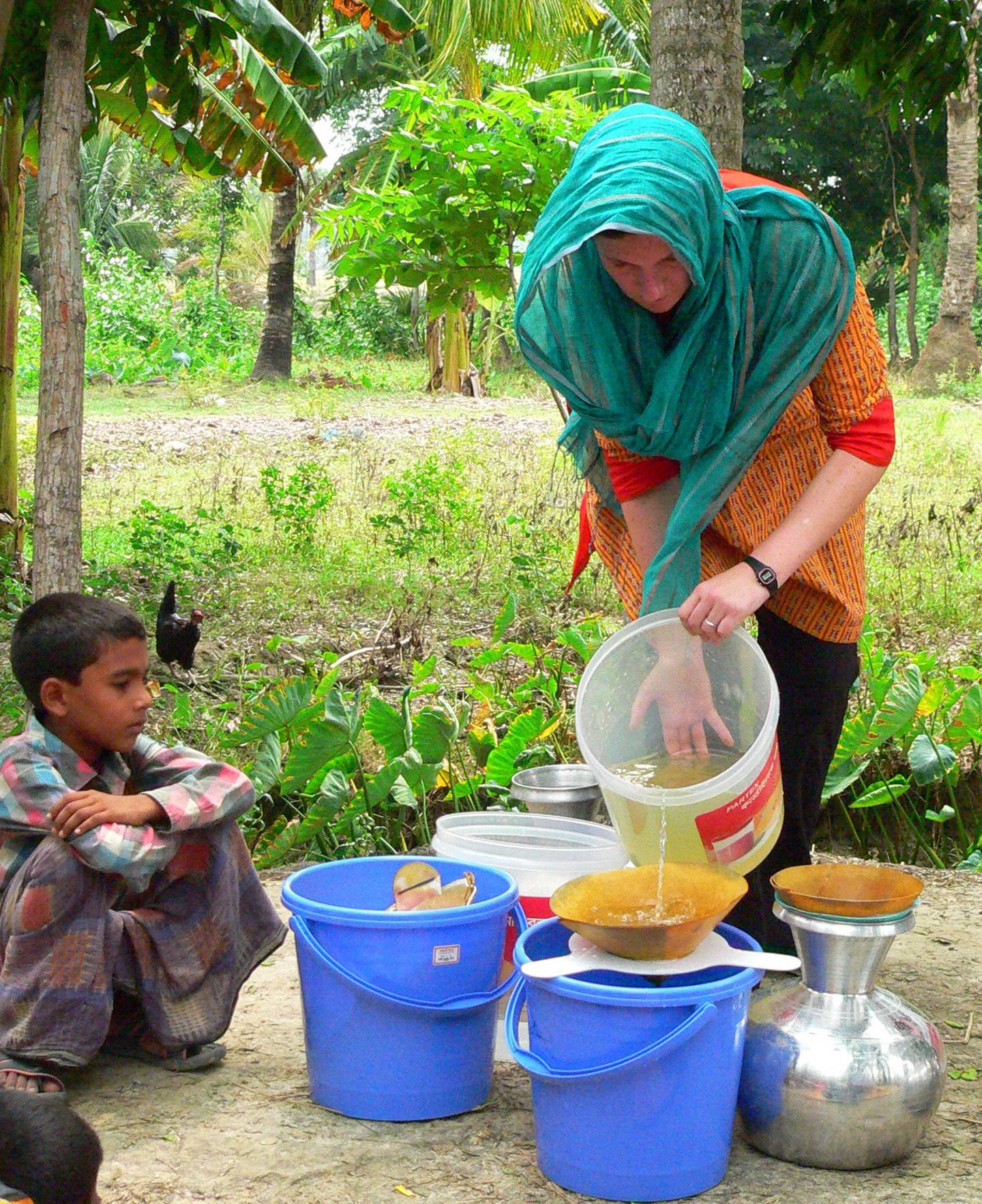‘Drinkable Book’ uses antibacterial paper to purify water
Click Here to Manage Email Alerts
The use of paper embedded with silver and copper nanoparticles may represent a valuable point-of-use water treatment through its potential to purify bacterially contaminated water, according to data presented at the National Meeting & Exposition of the American Chemical Society.
The novel technology developed by Theresa Dankovich, PhD, of Carnegie Mellon University, and colleagues is referred to as “The Drinkable Book,” and consists of a set of instructions for effectively cleaning drinking water and information on the necessity of water purification. It is infused with silver nanoparticles and is printed with food grade ink.
This technology was spurred by the need for inexpensive, transportable and effective means of purifying drinking water in developing countries, according to a press release. In previous research, Dankovich and colleagues characterized a method of neutralizing laboratory-cultured bacteria by percolation through a thick paper sheet containing silver and/or copper nanoparticles.
More recently, the silver copper nanoparticle papers were tested in a real-world setting with water samples acquired from various contaminated water sources in South Africa, northern Ghana, Haiti and Kenya, according to the researchers. They evaluated the papers for their effectiveness in bacteria inactivation, reduction of turbidity and metal leaching as the contaminated water passed through the papers.

Figure 1. Dankovich pours contaminated pond water into a funnel containing an antimicrobial filter paper to obtain clean drinking water in a rural area of Bangladesh.
Source: Ali Wilson
"In Africa, we wanted to see if the filters would work on 'real water,' not water purposely contaminated in the lab," Dankovich said in a press release. "One day, while we were filtering lightly contaminated water from an irrigation canal, nearby workers directed us to a ditch next to an elementary school, where raw sewage had been dumped. We found millions of bacteria; it was a challenging sample.”
The researchers found that the water sources showed influent coliform bacteria levels ranging from 200 CFU/100 mL to 3,500,000 CFU/100 mL. In treating the less-contaminated sources, both the silver and copper nanoparticle papers achieved total inactivation of the coliform bacteria. In the case of more highly contaminated water sources, such as the sample cited by Dankovich, the silver nanoparticle papers achieved near-complete inactivation of the bacteria, demonstrating a slightly higher bacteria reduction of log 6, compared to the carbon nanoparticle papers which demonstrated log 5 reduction.
"But even with highly contaminated water sources like that one, we can achieve 99.9% purity with our silver- and copper-nanoparticle paper, bringing bacteria levels comparable to those of U.S. drinking water," Dankovich said. "Some silver and copper will leach from the nanoparticle-coated paper, but the amount lost into the water is within minimal values and well below Environmental Protection Agency and WHO drinking water limits for metals."
Metal loss from the sheets was negligible for most of the water purification experiments, with values less than 0.1 ppm for silver and 1 ppm for copper.
According to the press release, these findings led Dankovich to form a nonprofit company, pAge Drinking Paper, which has partnered with the nonprofit organization WATERisLIFE and designer Brian Gartside to develop The Drinkable Book.
The book consists of silver nanoparticle-embedded pages printed with educational material on water safety, both in English and the native language of those living where the technology is to be used. Pages of the book are removable, and are designed to slide into a holding device in which the water is poured through and percolated. Each page has the ability to clean up to 26 gallons, or 100 liters, of drinking water, and a book can filter one person’s water needs for 4 years.
Dankovich is also applying her expertise to collaborative work with industrial designers at the University of Cincinnati and environmental engineers at Carnegie Mellon, according to the release.
“We have a bunch of designs, and we are trying to trim them down and keep them simple,” she said in the release. “Worldwide, many people use a 5-gallon bucket for many needs, so we are basing our approach on that type of container.”
Dankovich added that the goal is to bring the technology fully into real-world, everyday use.
“Along with applications, our biggest focus is to scale up, going from a lab bench experiment to a manufactured product,” she said in the press release. “We have to go from ‘cool chemistry’ to something everyone can understand and use.” – by Jen Byrne
Reference:
Dankovich TA, et al. Session ENVR 21. Presented at: 250th National Meeting & Exposition of the American Chemical Society; August 16-20, 2015; Boston.
Disclosure: Infectious Disease News was unable to determine relevant financial disclosures at the time of publication.
